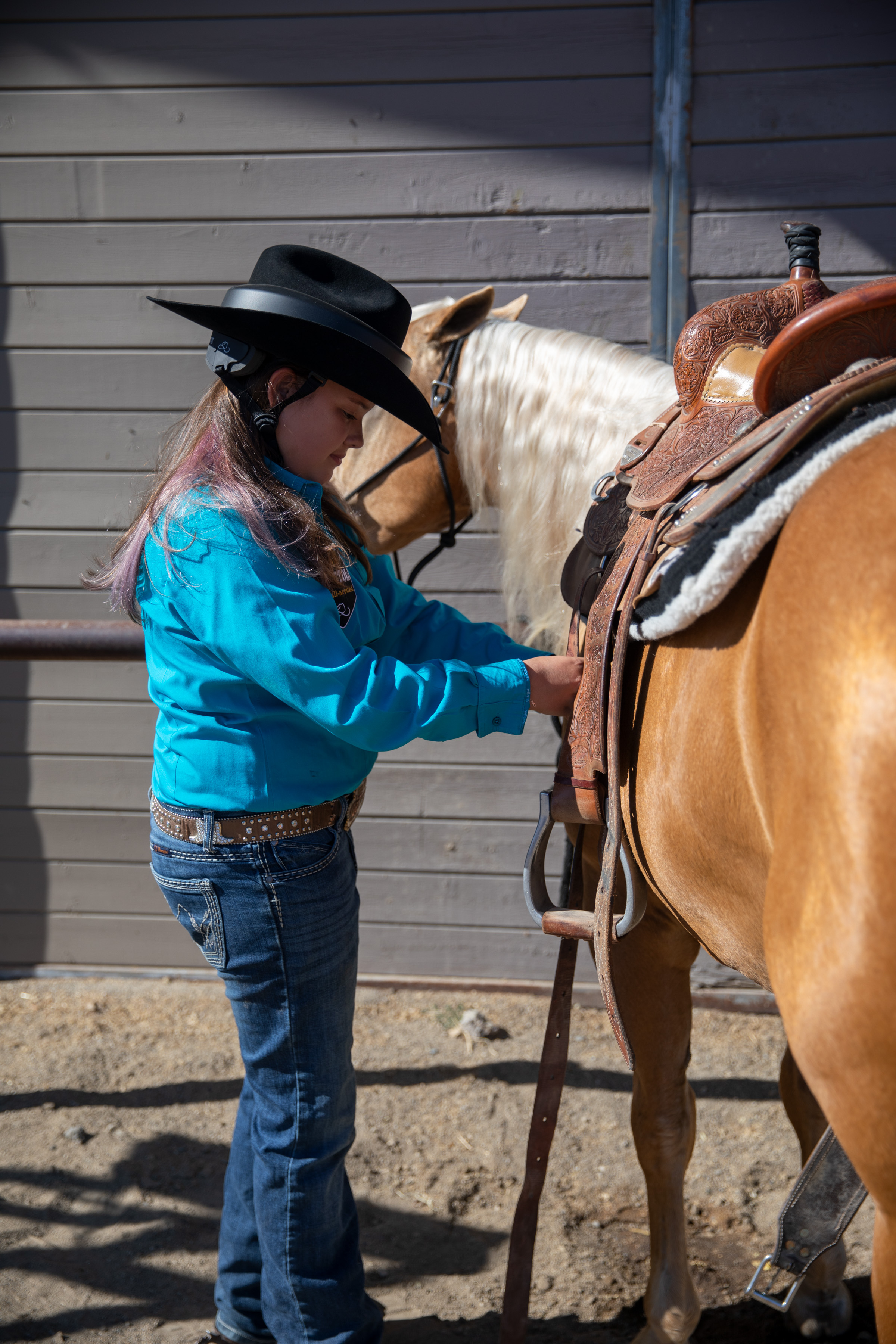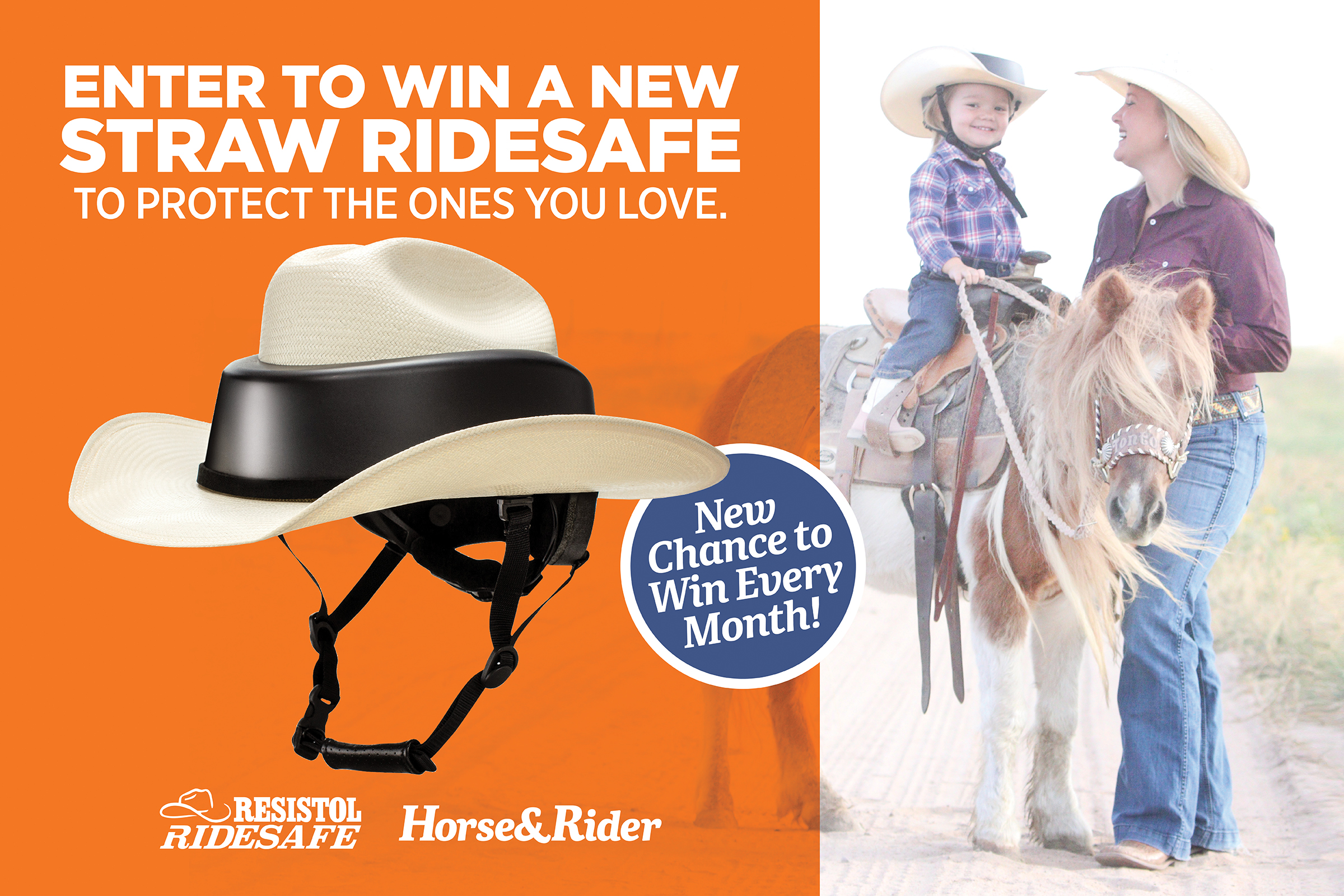While a Resistol RideSafe will help protect you or your kiddo from an inevitable fall that goes along with riding horses for any real length of time, some wrecks are preventable.
One of those all-too-common wrecks? Buck offs.
No matter how safe we try to be with ourselves and our kids, horses have minds of their own. National Reined Cow Horse Association trainer (and junior-rodeo dad!) Casey Branquinho provides these critical tips for knowing when and why your horse wants to buck, and what you can do to stop him.

[SHOP: Get a Resistol RideSafe for your kids now!]
Is Your Horse Warning You He’s Going to Buck?
- Watch the tail. Is his tail clamped down between his butt cheers? That’s a pretty good indicator that he’s going to want to break in two.
- How’s he moving? After you put your saddle on and tighten the cinch and go to lead him off, is he tight? Is he not wanting to move, with his whole body tense? He could be ready to blow.
- Check his ears and eyes. Are they pinned flat back, when they’re usually relaxed? Can you see the white in his eye, and are they cautious?
- Hump in his back? The old timers always talk about the hump in a horse’s back. That means that your saddle is sitting up in the back because your horse’s back is rounded in the center—that’s the dead giveaway he wants to buck.

External Reasons Your Horse Might Buck
- Watch the weather. Is a storm rolling in? Here in California, on a cool, foggy morning, the horses will act a fool. On hot days, horses usually don’t want to buck. But when it’s cool, or the weather suddenly turns, that’s when a horse that’s prone to bucking will usually think about it. Are you heading off for a camping trip in the mountains? That change in climate, especially on a cool mountain morning, could cause your horse to get fresh and want to break in two.
- New places. Maybe your horse hasn’t traveled a lot. Maybe he’s never been to a horse show, a fair, or a rodeo. Be aware of flags, of wagons, of signs. Your horse may very well be snorty and unsure of the situation. Just be aware of your environment.
- Changes. Did you try a new saddle, pad, or cinch? Anytime you’re switching it up, just be aware of how your horse is handling the fit. Do your best to make sure nothing is pinching or putting undue pressure on the wither or the loins.
- Ride time. Has your horse been standing around, eating hot feed, and not getting any exercise? Maybe he’s just so fresh he doesn’t know what to do with himself.
[SHOP: H&R Editor-Recommended Longe Lines on Amazon]
Tough 1 Rolled Cotton Longe Line
Weaver Leather Cotton Longe Line
(As an Amazon Associate, we earn from qualifying purchases made through affiliate links.)
What to Do When You Think Your Horse Is Going to Buck
- Check for injury. If there are no obvious external factors causing your horse to tense up, and if you’ve not made any changes to his routine, it might be time to see a vet, chiropractor, or dentist.
- Head to the round pen. Even on my good horses, if they’ve had some time off, I head to the round pen to longe them. Some people think they’re too cowboy to longe a horse, but that’s not the case. There’s just no reason to put up with stupidness for the first 20 minutes if it’s preventable by a little longeing. Watch for his body language to change, and watch for him to stride out and start relaxing instead of taking those tight, short strides that means he’s trying to buck. You’ll be able to watch him take a deep breath and start relaxing.
- ‘Untrack’ him. Every time I tighten a cinch on any horse, I make sure to get all four feet moving before I try to get on. In a horse that might have a little hump in his back but doesn’t really want to buck, the solution could be as easy as making him take a few steps to relax to get him to take a deep breath and relax.
- Find someone to ride with. Don’t put yourself in an unsafe position. Seek expert help from a trainer or, better yet, have someone else with more knowledge get on him first. If you’re at an unfamiliar location, have someone else horseback stand beside your horse as you mount and stick close as you get comfortable for the first 10 minutes or so.
- Sell him. I don’t take this one lightly. Some horses fit some people, while other horses fit others. You’ve got to know how much riding a horse needs, and how much you can give him. Some horses need to work five or six days a week, while their owners only have time to ride once every two weeks. That just isn’t a match. If you bought a car that was a lemon, you wouldn’t just keep driving it. People buy a horse and think, well, that’s their horse. But there are cowboys out there who can put a horse that needs a lot of miles to work, and he’ll end up a good horse in the end, just for someone else. H&R






